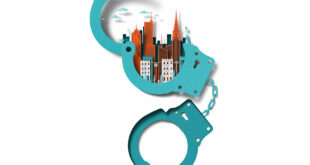The “perfect” photo is pervasive in magazines and advertising, but with cautious optimism, there might be an end to the fakery.
Of all the things to criticize about women’s magazines and fashion advertising, nothing is more universally reviled than the airbrush. The world of the digital photo retoucher is that of a beauty-standard Frankenstein: normal-sized women are made to look wan and waifish, older women are remade into ageless nymphs, limbs are lengthened, breasts are enlarged, skin is whitened. Men aren’t exempt, either:
wrinkles are massaged out, guts and love handles whisked away. Even those we perceive to be nigh-perfect are often altered to be ridiculous, obviously fake, and robotic. But as it becomes more prevalent, and more people are interested in tracking it — whether for feminist or tabloid purposes — is it possible that the era of the obscenely Photoshopped image could be reaching an end?
In the last decade or so, as photo airbrushing has become both more sophisticated and more accessible, we’ve seen a rapid expansion of its use to make magazine images the very definition of perfection, at least in the opinions of editors and other gatekeepers. Sarah*, a professional photo retoucher who’s worked with most major women’s magazines, says that photo retouching has been common since yearbook pictures acquired a glossy dew in the 1980s, but says there’s been a “Cambrian explosion over the last 15–20 years, with the advent of Photoshop.” Largely influenced by commercial fashion, the demand for images that depict the supreme Western beauty standard exploded, tending towards tall, tiny-waisted, wrinkle-free, and light-skinned — and rarely has it deviated from those unrealistic demands, as feminists have riled against for decades. Even Crystal Renn, the fashion world’s most famous “plus-sized” model, now wears a size 8, slim for most nonmodel women. The most obvious and frequent complaint about Photoshop, of course, that its increased use makes both women and men feel completely insecure with their realistic bodies, leading to poor self-esteem, racial insecurity and discrimination, body dysmorphia, fear of aging (and youth worship) and, in the worst cases, life-threatening eating disorders. It was enough to lead the American Medical Association to adopt a policy against airbrushed images in publications directed at children and teens. “The appearance of advertisements with extremely altered models can create unrealistic expectations of appropriate body image,” said the AMA’s Dr. Barbara McAneny. “We must stop exposing impressionable children and teenagers to advertisements portraying models with body types only attainable with the help of photo editing software.”
The AMA followed liberal Democratic members British Parliament, who in 2008, sought to ban overt airbrushing in magazines directed toward kids under 16. MP Jo Swinson, who headed the movement, told the Daily Mail:
“I am not suggesting that advertisers should stop using models who are perhaps more beautiful than the average person. But there is a difference between doing that and using a beautiful model and nipping in her waist by two inches or taking slathers of flesh off her thighs. There is lots of evidence to show that children under 16, particularly those aged around 7 or 8 years old, are not particularly good at telling the difference between adverts and editorial content on TV or magazines. They view it all the same way.”
But, of course, the unrealistic beauty standard has been in practice for much, much longer than when amateur designers could pirate Adobe products or television distorted the young mind. Modern digital retouching began in the 1980s, and had a historical precedent in the painted photographs of the 1940s and ’50s —pinup girls used in advertising, who were based on pictures of real women but artistically rendered to make them smaller, more doll-like, and with much, much pointier boobs. (Those pictures obviously precede the hairless perfection of today’s mainstream porn actors, which have a similarly devastating effect on the self-esteem and male expectations of women and girls.)
With pinups, it was clear that the paintings were fake. And with the Internet Age, and feminist blogs in particular, it’s much easier to track the insanity that is over-airbrushing, particularly when “before” photos leak, as with the the string of ads in which 52-year-old Madonna is made to look 28 or, at the very least, a living doll. At this point, there’s been enough documentation that curious adults can figure out that photographs, particularly those having to do with fashion, are doctored in some way, particularly when they’re painfully, hilariously obvious. Not just because of the tireless documentation of places like Jezebel, but because of outrage as the practice became more prevalent.
Recently Hany Farid, a Dartmouth computer science professor, and Eric Kee, a Ph.D. student, laid the groundwork for a tool that would be able to break down how much an image has been Photoshopped on a scale from 1–5. Published in the National Academy of Sciences, their “Perceptual Metric for Photo Retouching” measures the degree to which a photo has been altered, using software that mimics human perception. Figures from their paper, published here, show each degree on their scale, from light zit-obscuring to deleting a good 40 years from a person’s face, as identified by their test subjects.
New software tool aside, some perceive the flurry of criticism and exposes around airbrushing as precursors to a new, more realistic movement in editorial imagery. More editor Lesley Jane Seymour told the New York Times she thinks that’s what readers increasingly want. “Readers aren’t fooled if you really sculpt the images,” she said. “If you’re a good editor, you don’t go too far these days. If you give someone a facelift, you’re a fool.”
Of course More is a magazine for women over 40, so it behooves Seymour to say as much. Says Sarah, the photo retoucher, “I am fascinated by the prospect of this software, and I think it’d be great if everything was rated and or exposed. But I doubt it will do much to change the culture of retouching, because it is so wedded to larger narratives about body image. Rachel Ray and Oprah both have magazines where they frequently appear on the cover and are very retouched. … And you know, more power to them, I guess.” Vogue, which sets the industry standard, is clearly not laying off it. Just look at the gloss job on these images from its January 2011 issue featuring Kristen Stewart, the young Twilight star who’s already youthful, beautiful, and thin enough without Adobe’s help. (See also: Glamour’s November issue, which apparently thought her left arm and ear were not cover material.)
Still, how far will people go before excessive Photoshopping becomes too tiresome and surreal for even the most beauty-centric among us? Recently Jezebel noted that certain ads for H&M depict models’ real faces … supplanted atop fake bodies, in some weird and interesting yet horrific effort towards perfection. While that might bring up interesting thoughts in cyberpunks, it’s a generally creepy thought that we’re moving beyond “perfecting” real bodies into “precrafting” fake ones. As if Gisele as a standard wasn’t hard enough, no one will ever be able to attain the abs of a computer.
But it’s not the extremities of airbrushing that are most damaging, says Sarah. It’s the desensitization. “The most mind-blowing things I’ve had to do aren’t necessarily making someone way skinnier, although I have definitely been shocked by that,” she says. “It’s more the prevalence than the extremeness that makes constant nipping and tucking disheartening. The most bizarre thing to me is instances where I’ve been asked to, like, pick everything up off of a table and move it around, and make it different sizes as if it’s fucking Colorforms instead of a photograph. Or compositing together photos to create an entirely new image that is no way a document of reality.” See above.
And yet, certain fashion magazines positing themselves as “high art” — boutique titles like Purple, AnOther Fashion, even slightly more mainstream mags such as V — seem to be leaning away from retouching more and more. The aesthetic seems to be that imperfections — a mole here, a roll of flab there — add to the couture-as-art vibes of their photography, which tend either toward realism or surrealism. It’s heartening, although it won’t be room for celebration until the most populist fashion titles, like the astronomical seller InStyle, follow suit.
But even in friendlier climes, Photoshop can still be a nefarious force. “‘Rawer’ photos can even be more insidious,” says Sarah, “because images are getting sold as “real” when they’ve still had a basic gloss.” But “basic gloss,” that’s the crux of it, isn’t it? How much “perfect” can we possibly take?
*Her name has been changed to protect her job.
Julianne Escobedo Shepherd is an associate editor at AlterNet and a Brooklyn-based freelance writer and editor. Formerly the executive editor of The FADER, her work has appeared in VIBE, SPIN, New York Times and various other magazines and websites.
 Mouood Mouood English Edition
Mouood Mouood English Edition




